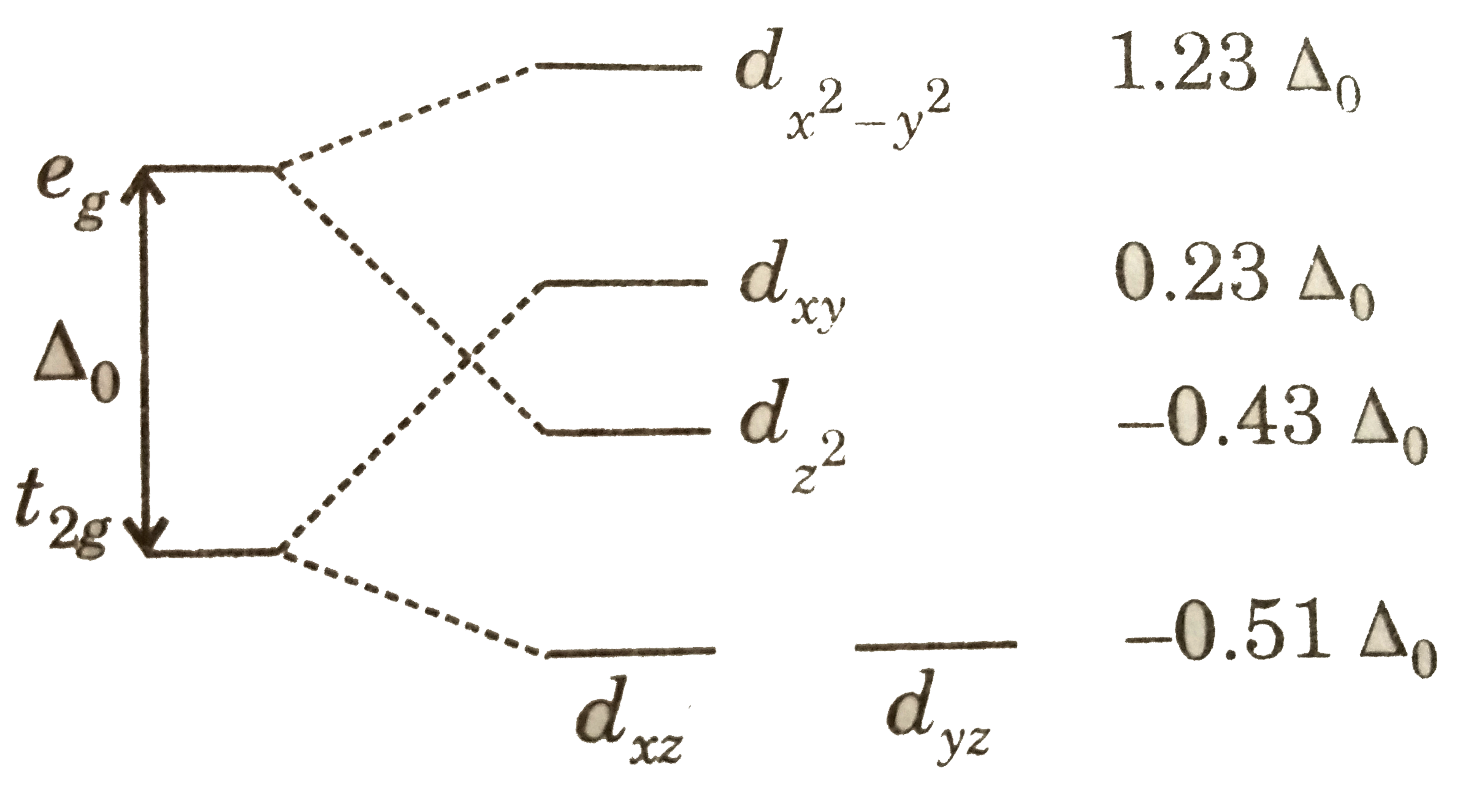For an octahedral complex, which of the following d electron configuration will give maximum crystal-field stabilisation energy?
High spin with d6 configuration
Low spin with d4 configuration
Low spin with d5 configuration
High spin with d7 configuration
The correct Answer is:C
Step by step video, text & image solution for For an octahedral complex, which of the following d electron configuration will give maximum crystal-field stabilisation energy? by Chemistry experts to help you in doubts & scoring excellent marks in Class 12 exams.
Updated on:21/07/2023Topper's Solved these Questions
Similar Questions
When degenerate d-orbitals of an isolated atom/ion come under influence of magnetic field of ligands, the degeneray is lost. The two set t2g(dxy,dyz,dxz)andeg(dx2−dx2−y2 are either stabilized or destabilized depending upon the nature of magnetic field. it can be expressed diagrammatically as:

Value of CFSE depends upon nature of ligand and a spectrochemical series has been made experimentally, for tetrahedral complexes, Δ is about 4/9 times to Δ0 (CFSE for octahedral complex). this energy lies in visible region and i.e., why electronic transition are responsible for colour. such transition are not possible with d0andd10 configuration.
Q. For an octahedral complex, which of the followin d-electron configuration will give maximum CFSE?
View SolutionThe splitting diagram for square planar complexes is more complex than for octahedral and tetrahedral complexes and is shown below with the relative energies of each orbital.

Which of the following set of de− have same crystal field stabilisation energy value for tetrahedral complex neglecting pairing energy (P) :
(P)d1,d6 (Q)d2,d7
(R)d3,d8 (S)d4,d9
(T)d5,d10
View Solution
Knowledge Check
For an octahedral complex, which of the following d electron configuration will give maximum crystal-field stabilisation energy?
Ahigh spin, d6Blow spin d4Clow spin d5Dhigh spind7ln which of the following electronic configuration ionisation energy will be maximum in
A[Ne]3s23p1B[Ne]3s23p2C[Ne]3s23p3D[Ar]3d104s24p3When degenerate d-orbitals of an isolated atom/ion come under influence of magnetic field of ligands, the degeneray is lost. The two set t2g(dxy,dyz,dxz)andeg(dx2−dx2−y2 are either stabilized or destabilized depending upon the nature of magnetic field. it can be expressed diagrammatically as:

Value of CFSE depends upon nature of ligand and a spectrochemical series has been made experimentally, for tetrahedral complexes, Δ is about 4/9 times to Δ0 (CFSE for octahedral complex). this energy lies in visible region and i.e., why electronic transition are responsible for colour. such transition are not possible with d0andd10 configuration.
Q. For an octahedral complex, which of the followin d-electron configuration will give maximum CFSE?AHigh spin d6BLow spin d4CLow spin d5DHigh spin d7
For a d4 metal ion in an octahedral field, the correct electronic configuration is :
View SolutionThe splitting diagram for square planar complexes is more complex than for octahedral and tetrahedral complexes and is shown below with the relative energies of each orbital.

Calculate crystal field stabilisation energy for a diamagnetic square planar d8 metal complex with the help of above diagram neglecting pairing energy (P)
View SolutionSpecies which represent maximum crystal field stablisation energy :-
View SolutionAmong the following complexes, the one which shows zero crystal field stabilization energy (CFSE) is
View SolutionAmong the following complexes the one which shows Zero crystal field stabilization energy (CFSE) is
View Solution